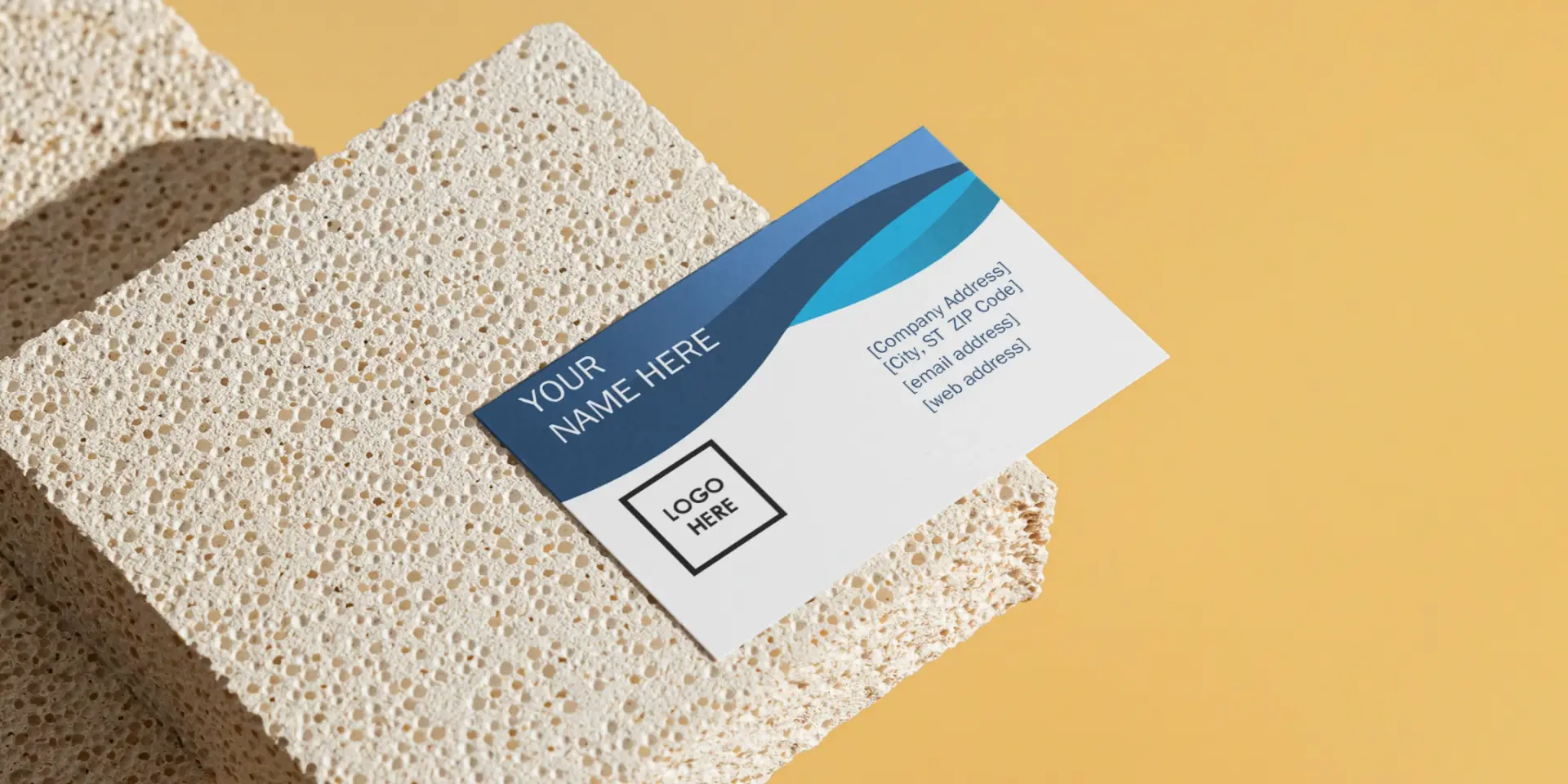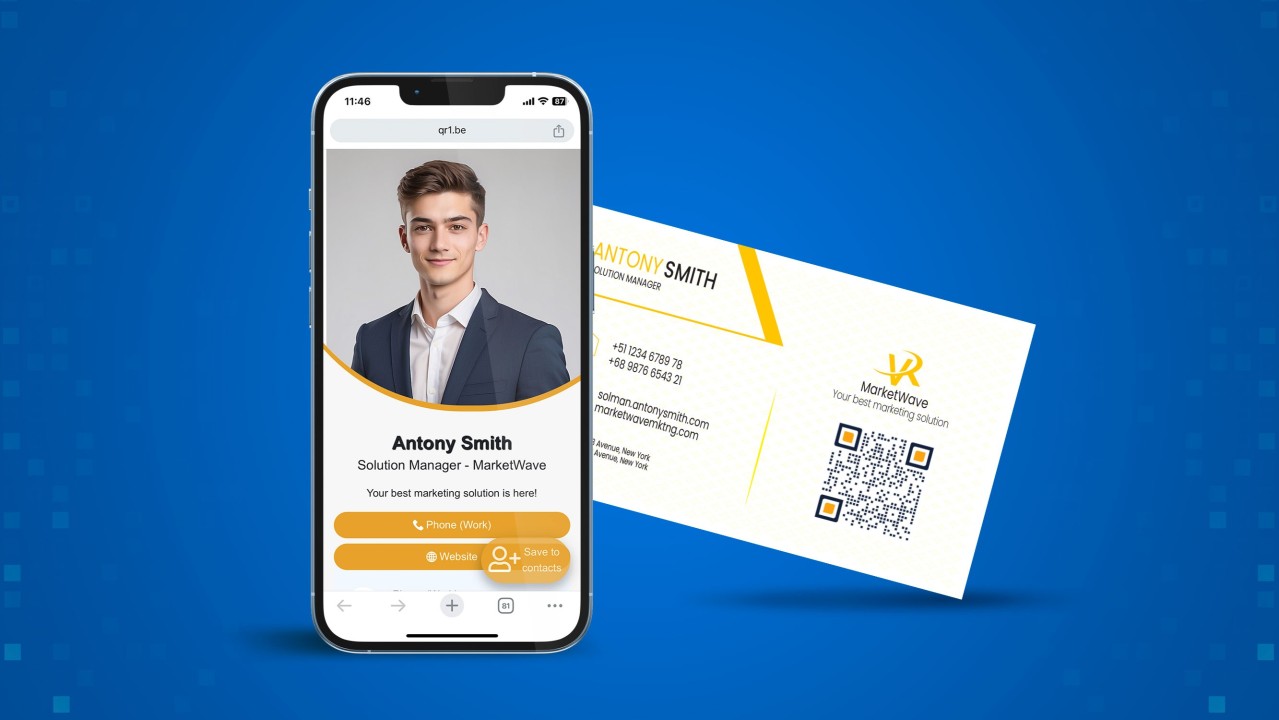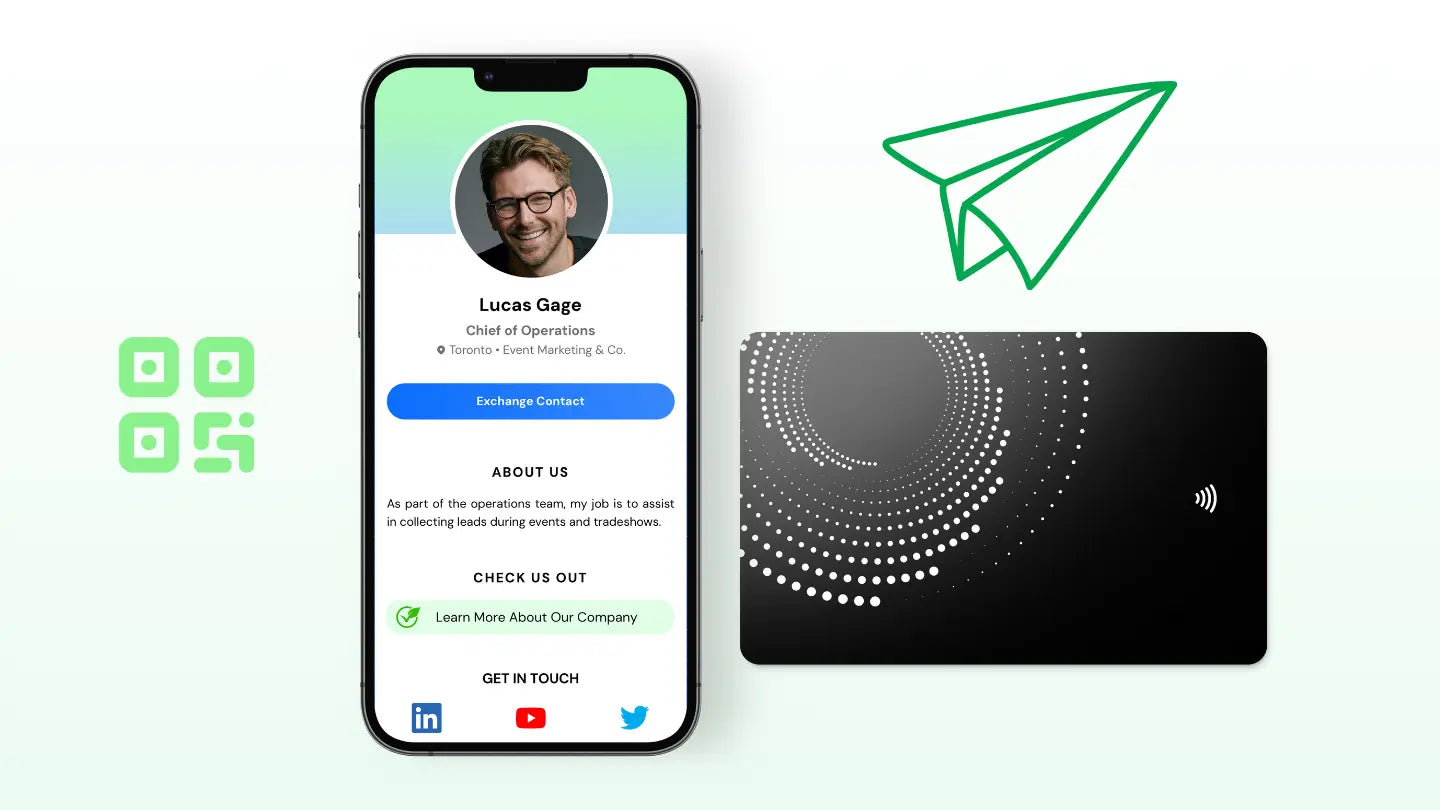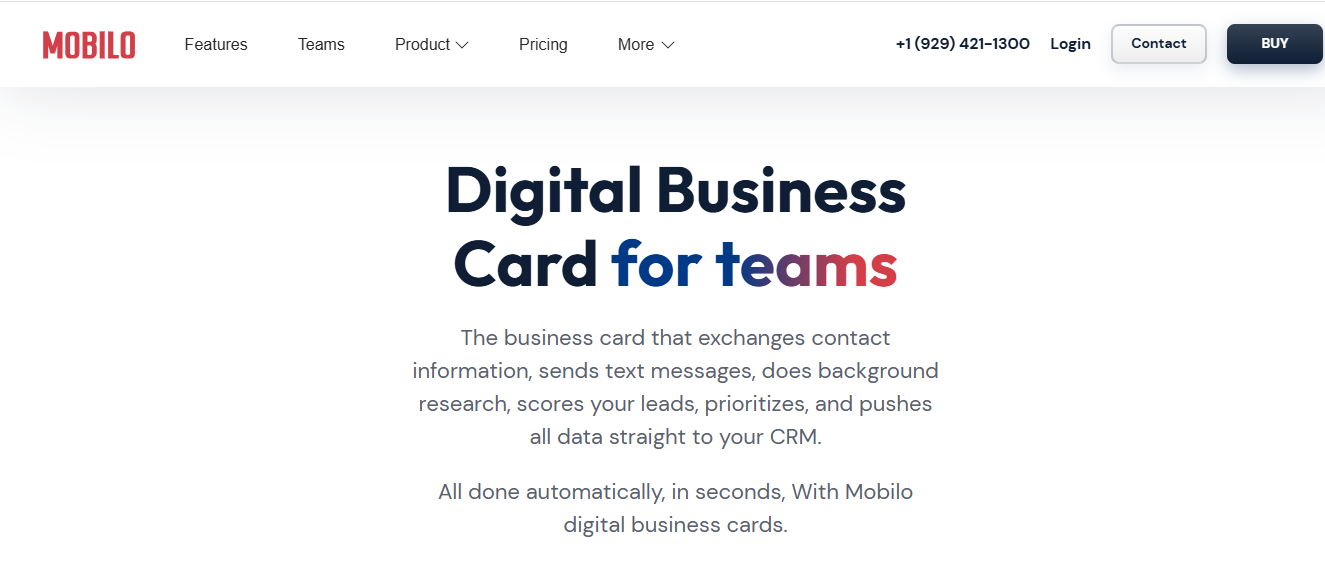.svg)

At a busy networking event, you watch people tap phones and trade profiles with a simple NFC touch while others still hand out stacks of paper cards. That moment raises the question, are business cards still relevant? This article helps you weigh paper cards, NFC business cards, QR codes, and digital business cards against real-world goals, such as clear follow-up, stronger first impressions, sustainability, and easier contact sharing. You will learn whether business cards, whether physical or digital, can enhance your professional image and networking effectiveness, allowing you to make informed, future-proof choices for connecting with clients and colleagues.
To help with that, Mobilo's digital business card provides contactless sharing, easy links for follow-up, and profiles that integrate with your contact system, allowing you to present a modern professional image and capture leads with less friction.

Physical business cards are not relics; they are tools that still facilitate deals when combined with modern capture technology. They offer a predictable, cross-cultural handshake that can be converted into a tracked CRM event in seconds, so the exchange becomes both human and measurable.
People bring cards because they solve three stubborn, real problems at once:
Device-to-device transfers fail when phones are incompatible or when someone is out of battery; handwritten notes get lost; and digital-only handoffs can erase the memory of the meeting.
According to the Business Networking Survey, 88% of professionals believe that business cards remain essential for networking in 2024, which helps explain why teams continue to supply them at conferences, client visits, and local meetings. This is not nostalgia; it is practical risk management.
Most teams handle networking the old way because handing a card is familiar and effortless. That approach works until dozens of meetings produce scattered scraps, delayed follow-ups, and no reliable attribution. The hidden cost is clear, including low follow-up, lost contact data, and fuzzy ROI on events.
Teams find that adding NFC or QR-enabled capture to a physical card turns that second-long exchange into a pipeline event that can be pushed automatically into CRMs with tags, source attribution, and follow-up workflows. Platforms like Mobilo link the tactile moment to CRM records, compressing follow-up windows from days to hours, while providing marketing and sales with the analytics they need to measure event performance.
When we ran short pilots with sales teams at industry meetups in 2024, the repeating pattern was simple. Reps who used smart, tappable cards stayed focused on the conversation, captured contact data instantly, and avoided the awkward phone fumbling that kills momentum.
Handing a card keeps eye contact, communicates professionalism, and shows respect for the other person’s time. It also preserves the nonverbal cues that help build trust, which is why physical exchanges still matter for senior buyers and culturally traditional partners.
Printing volumes force the question. The Global Print Industry Report estimates that over 27 million business cards are printed daily worldwide in 2024, a scale that demands more innovative procurement and sustainable design choices.
The answer is not to abandon cards, but to replace low-value print runs with reusable, NFC-enabled cards and centrally managed artwork that reduces waste and ensures consistent brand and legal language across teams. For regulated industries, that central control also prevents outdated contact details and noncompliant disclaimers from circulating.
Traditional paper cards fail at scale because they offer no tracking, no permission management, and no guaranteed handoff into existing systems. That failure shows up as data entry errors, duplicate contacts, and inaccurate attribution.
If your volume is small, a paper-first workflow is fine. When contact volume, compliance, or reporting needs increase, the more effective approach is a hybrid. Maintain the human exchange, and automate the capture.
Smart cards with built-in NFC or persistent QR codes capture consented contact details offline and push updates as soon as connectivity is available. This constraint-based approach preserves face-to-face rapport while preventing common pitfalls, such as spreadsheets that break at 100+ entries, manual import errors, and lost follow-up.
Prioritize speed, data ownership, and integration. Speed matters because response time predicts conversion; data ownership matters for privacy and compliance; integration matters because a captured contact is only helpful if it arrives correctly tagged in the CRM and triggers follow-up.
Teams that choose solutions with native CRM connectors and durable hardware eliminate a surprising amount of friction. That combination turns a single handshake into a measurable, auditable pipeline event rather than an anecdote someone hopes they remembered.

Digital business cards replace a fragile exchange of paper or single-use hardware with a persistent, web-first contact that opens immediately, tracks engagement, and adapts to whatever channel your prospect prefers. They eliminate friction at the moment of introduction, while providing teams with structured data they can act on quickly.
A digital business card is a lightweight, cloud-hosted profile that resolves to a short URL or landing page when someone taps, scans, or clicks on it. Technically, it is a dynamic vCard or microsite that can be updated in real time, versioned for different contexts, and instrumented with analytics.
The key difference from a static card or an NFC chip is flexibility, like you can swap a phone number, add a campaign tag, or attach a PDF after printing has been shipped for a long time. This pattern is evident across trade shows and sales visits, where people want to change titles, swap collateral, or publish a new case study without reprinting anything. That agility is crucial in fast-moving deals.
Start to finish, the flow is dependable and straightforward. You build a profile in the cloud, the system issues a stable short link and a scannable QR code, and those triggers open the profile in any phone browser.
Technical safeguards ensure the handoff remains reliable, including automatic fallbacks in case NFC is blocked, small preload sizes to prevent pages from loading slowly on weak networks, and UTM-like tags that preserve campaign context when the card is saved.
On the backend, webhooks or native connectors push contact events directly into CRMs, where lead-scoring rules and automated workflows take over. Because the card is web-native, privacy controls and transient tokens limit exposure of personal data, and you can expire a link if a role changes or a contractor leaves.
Think like a mobile reader, not a printer. Put the single action you want first, then the supportive context. A clear primary CTA, concise role label, and a single contact route should appear above the fold, with social links, attachments, and bios layered beneath collapsible sections to maintain fast load times. For teams, add metadata fields for source, campaign, and account to enable automatic CRM ingestion.
Also, apply basic accessibility features, such as high contrast, readable font sizes, and alt text on images, so contacts who use assistive technology can easily parse the card. Finally, treat attachments conservatively; a short intro video or optimized PDF is far more effective than a 50 MB download that never completes on an exhibition hall Wi-Fi network.
This shift comes from two practical frustrations and one cultural motive. NFC and plastic cards can fail on certain handsets or require an awkward setup, which can kill momentum in a meeting. Physical cards generate recurring waste and friction when titles or programs are changed.
Younger and tech-savvy professionals prefer profiles that link into their workflow, not objects that sit in a wallet. That mix of reliability, environmental intent, and integration with daily tools is what pushes companies to adopt digital-first contacts.
Yes, the market signals stability and scale. The digital business card market is projected to reach US$389.3 billion by 2024. Market Research Future published that projection in 2023, which shows the category has moved past niche use cases into a commercial growth phase.
The acceleration began earlier, when COVID-19 led to a 70% increase in digital business card adoption as businesses transitioned to contactless networking. Wave Connect reported that in 2023, and that jump explains why contactless, shareable links are now the default behavior at events and in remote outreach.

Choose the card that matches the person you meet, how you follow up, and the signal you want to send:
Pick the format that minimizes recipient friction, captures CRM-ready metadata at the moment of exchange, and reflects the brand quality you want prospects to remember.
If you sell to conservative buyers who value ceremony and craftsmanship, prioritize a premium physical card with an NFC chip or a durable wallet card that tucks into meetings and leaves a lasting impression.
If your buyers work in SaaS design or modern agencies, a web-first card with instant browser load, a short and memorable URL, and NameDrop or NFC makes saving effortless. When serving a mix of legacy and digital-first accounts, use a hybrid approach. Durable printed cards with an embedded NFC chip and a visible QR code for instant fallback.
Lead with one explicit action, not a menu of options. Put the primary contact method, role, and short CTA at the top, then defer extras behind a landing page so load times stay low. Use high contrast, legible type at small sizes, and test scannability. Print the QR at the exact size it will appear on the card, then scan it from a pocket and from a camera app.
A matte tactile finish, rounded corners, or a small embossment indicates to people that this is worth keeping, as 39 percent of individuals would choose not to do business with someone if their card appears cheap, according to Print To Brand. Keep the design consistent across the team by locking logo placement, typography, and color palette in admin templates so every rep hands out the same signal.
This pattern appears repeatedly at events and client visits. Recipients refuse to download an app, NFC fails on older phones, and teams end up with piles of unscanned cards or spreadsheets full of typos. The fix is built around redundancy and testing, not heroic hope.
Always include an NFC tap, Apple NameDrop (where available), and a visible QR code that opens a tiny, instrumented landing page, along with a short link encoded with UTM tags for manual entry. Test these flows in real-world conditions, such as a crowded hall with weak Wi-Fi and pockets full of cards, and adjust for the slowest device you expect to encounter.
Prioritize tracking and control, such as per-card analytics, campaign tags, and a persistent contact URL that updates without reprinting. For security, require encryption at rest, role-based access for team admins, audit logs for exports, and session tokens for temporary links.
For CRM flows, insist on native connectors or reliable webhooks that carry source, campaign, and account-level tags so your automation can trigger the correct sequence immediately. Also, verify offline sharing options for airports, secure buildings, and airplane mode, so nothing breaks because connectivity is down.

If you want to streamline networking and generate 10x more event leads, let's explore Mobilo. Join over 59,000 companies using Mobilo's NFC and QR smart business cards to automatically exchange contact details, enrich and score prospects against your ICP, and push qualified leads straight into your CRM. Book a demo and get your first 25 cards free, worth $950, because when 90% of business contacts never enter your CRM, you can no longer rely on paper.